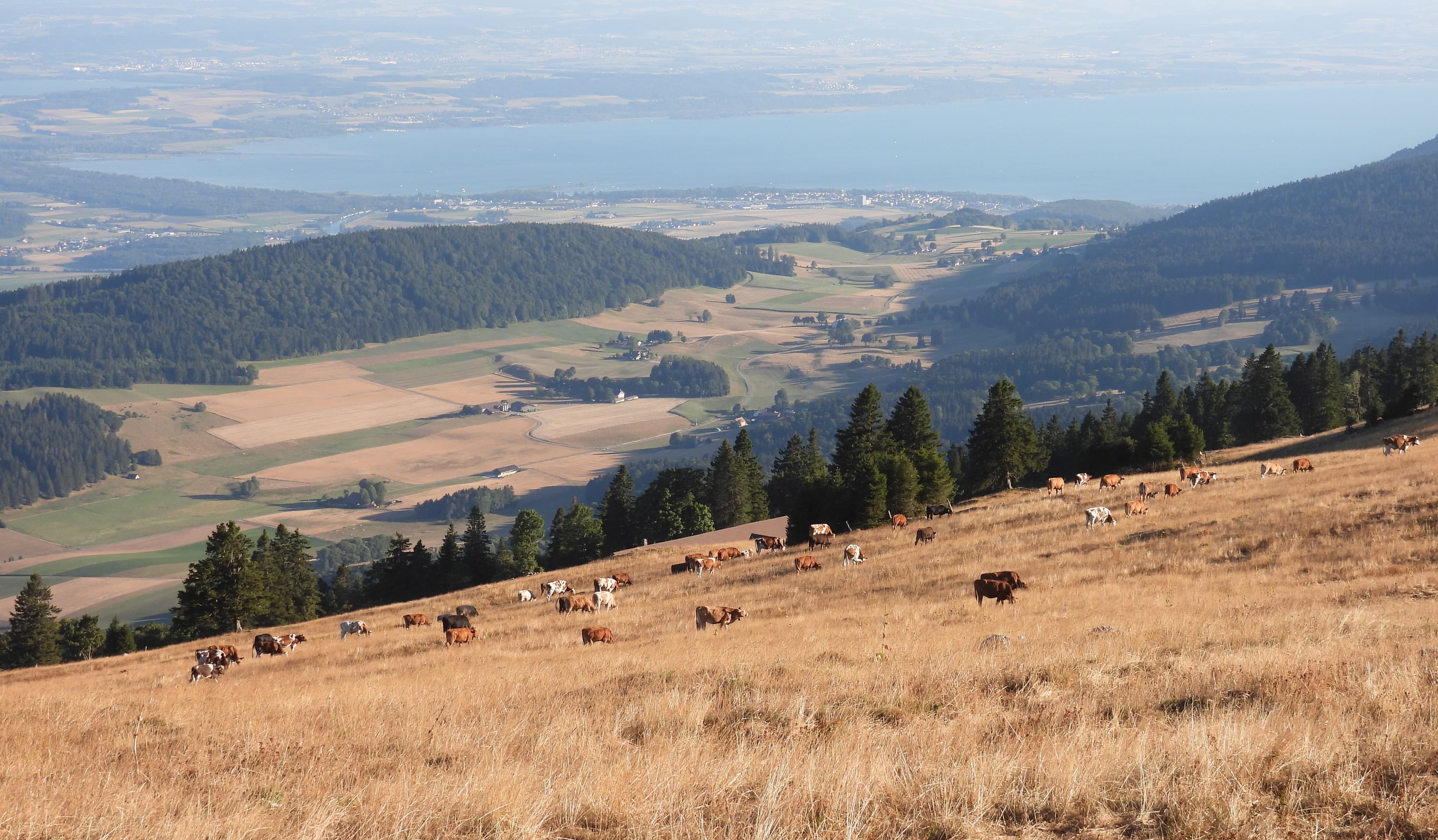Drought
Situation until 11/23/2025
Select a region for further information.
- Not dry
- Slightly dry
- Dry
- Very dry
- Extremely dry
Situation until 11/23/2025
- Not dry
- Slightly dry
- Dry
- Very dry
- Extremely dry
Drought bulletin
No up-to-date drought bulletin is currently available.

Influencing factors

Precipitation
Precipitation plays a central role in the development, intensity, and duration of drought. If precipitation amounts are far below the norm for several weeks and months, this is referred to as meteorological drought. Meteorological drought leads to a lack of water in the soil and low groundwater levels. A meteorological drought lasting just a few weeks can lead to low soil moisture and vegetation stress, while too little precipitation over several months results in low discharge and low groundwater levels.

Snow
Snow plays an important role in Switzerland's water cycle. Around 40% of annual runoff comes from snowmelt. From autumn to spring, precipitation in the mountains mainly falls as snow. The snow cover that builds up during this time reaches its maximum thickness between February and May and acts as a natural water reservoir. As temperatures rise in spring, the snow cover melts and the water drains away slowly. The snow cover, particularly when it melts, thus has a major influence on the discharge dynamics locally and in low areas downstream. The Institute for Snow and Avalanche Research (SLF) provides up-to-date data on snow depth, snow water equivalent and meltwater runoff, allowing estimations of the amount of water released during snowmelt to be made. These data are included to assess the drought situation in Switzerland. The snow water equivalent indicates how much water is stored in the snow cover. It corresponds to the water column that would result if the snow were to melt. The current snow situation in Switzerland can be viewed at the links below. This is also compared with the average snow situation in the past. Snow water equivalent absolut shows the absolute modelled values of available snow water equivalents (in mm). Snow water equivalent relative shows deviation from the long-term average of available snow water equivalents (mm). Further information and links: Snow hydrological forecasting Snow cover water equivalent – MeteoSwiss (admin.ch; de, fr, it) Hydro-CH2018 hydrological scenarios

Rivers and lakes
The amount of water in rivers and lakes depends in particular on precipitation, temperature, evaporation and the characteristics of the area from which the water comes (catchment area). The CH2018 climate scenarios for Switzerland predict higher temperatures and more evaporation in the summer months. There will be less precipitation in summer and more in winter. The snowmelt will begin earlier in the year and the amount of will snow decrease. More precipitation will fall in the form of rain rather than snow . Discharge and water levels in Swiss surface waters will decrease in the summer months, as shown by the Hydro-CH2018 hydrological scenarios . Meanwhile, water consumption during this period will increase, e.g. for agricultural irrigation. Further links and information: Water temperature: current and forecast Current information on Reservoir levels For shipping: Current water levels on the Rhine at Basel and Neuhausen Discharge and water level FOEN

Groundwater
During a dry period lasting several weeks, there is a lot less precipitation than usual, so less groundwater is formed. Groundwater resources that are mainly fed by precipitation are therefore more sensitive to dry periods than groundwater resources that are also fed by river or lake water. However, during longer dry periods rivers carry little or no water, so are also unable to replenish groundwater to their usual extent. The degree to which drought affects groundwater volume also depends on the nature of the subsoil, the thickness of the groundwater and the depth at which it is situated. Because of the complex subsurface properties and the small-scale topography of Switzerland, there are considerable local and temporal differences in the impact of drought on groundwater resources. Further links and information: National Groundwater Monitoring NAQUA Drought and groundwater

Soil moisture
Soil moisture, i.e. the amount of water stored in the soil, is strongly influenced by meteorological factors such as precipitation, evaporation, radiation, temperature and wind. Surface water inflow and irrigation also contribute to soil moisture. How much water a soil can store depends on its properties. This includes, for example, the size of the individual soil particles (particle size distribution) and the proportion of organic material in the soil (humus content). Other influencing factors are the type of plant cover and its growth stage as well as the shape of the terrain, exposure and steepness. Among other things, soil moisture plays a central role in the growth and nutrient supply of plants. Further information and links: Drought indices – MeteoSwiss Cantonal soil monitoring network: Centibar and Bodenmessnetz.ch Irrigation network of the School of Agricultural, Forest and Food Sciences HAFL

Vegetation
Vegetation refers to plant cover, i.e. the totality of all plants in a particular area. This includes agricultural crops and all ecosystem flora, such as forests, moors and plants in settlement areas. During dry periods, the amount of water in the soil and in the atmosphere that plants require for optimum development falls. The plants suffer ‘drought stress’. Drought stress leads to a decline in vegetation health and restricts the growth and regeneration of plants and the entire ecosystem. In addition, the plants become more susceptible to pests and their mortality rises. Further links and information: TreeNet - The biological drought and growth indicator network - TreeNet Drought stress: Map of water availability for plants